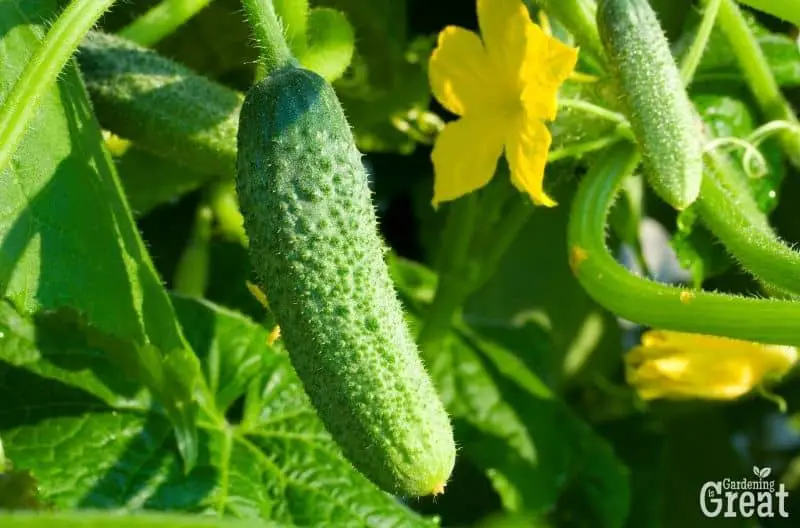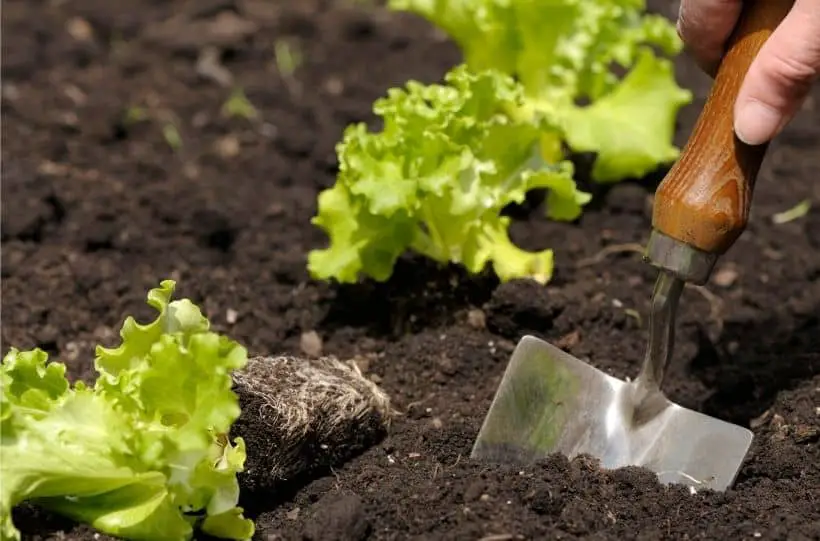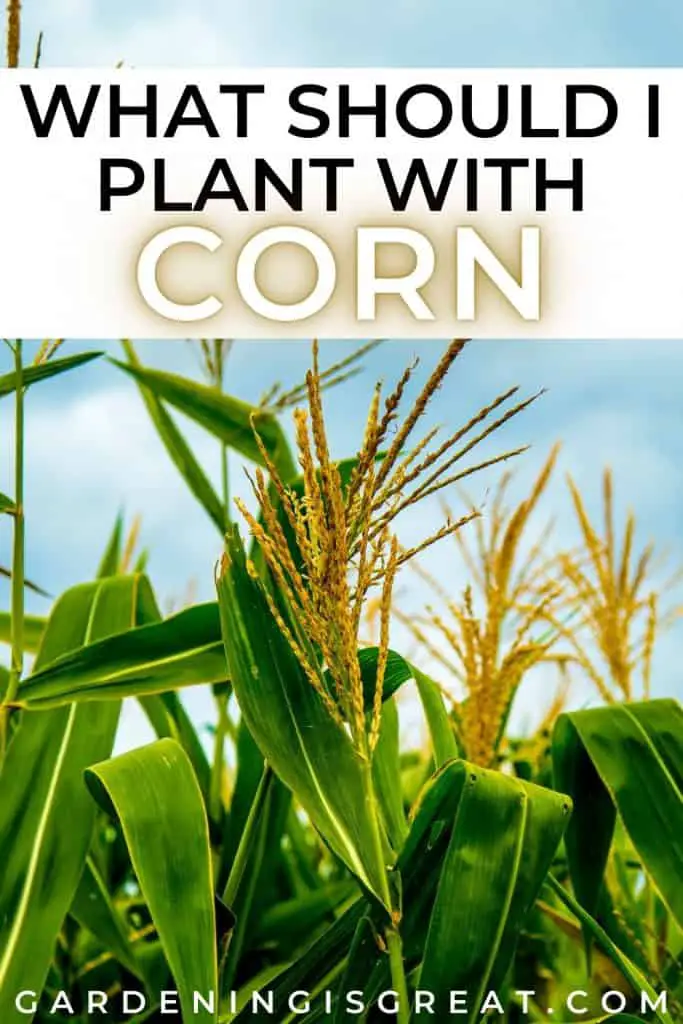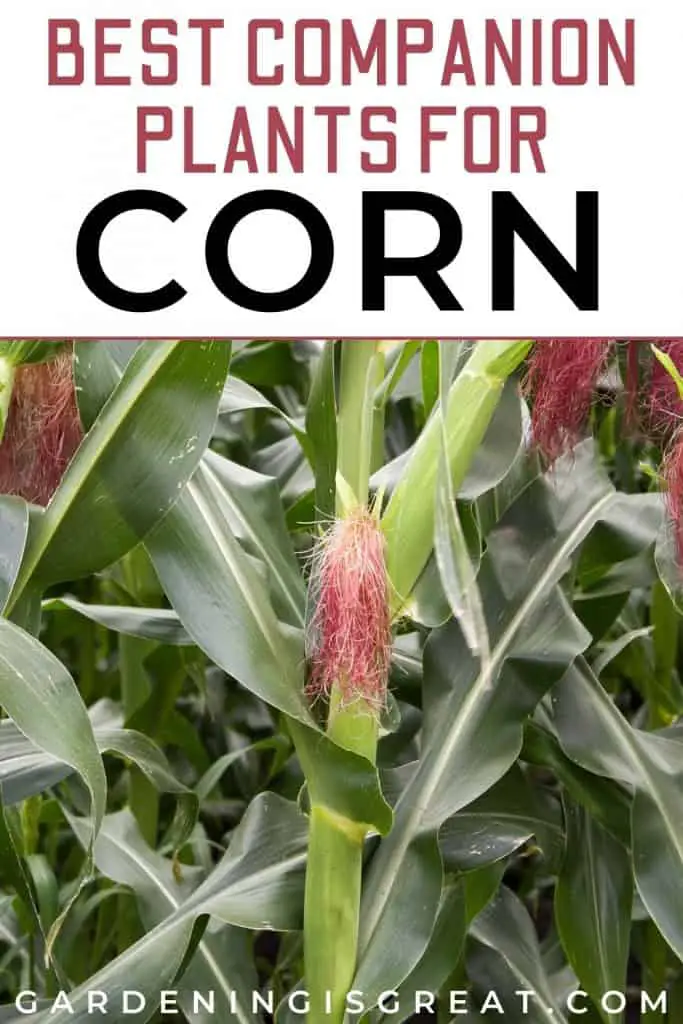11 Of The Best Companion Plants For Corn
Corn is a popular vegetable for gardeners to grow due to being relatively easy to yield a successful harvest. But, like most crops, it does require enough nutrients and is susceptible to pests.
To increase the chance of successfully growing corn, many gardeners choose to add companion plants. Companion plants are plants that often mutually benefit from one another, or, are flowers planted next to your crop to help deter pests.
With each crop, certain companion plants are beneficial for your vegetable, and some that you should not plant together.
Here is a list of 11 of the best companion plants for corn to help you achieve a successful harvest.

Pumpkins
Pumpkins and squash are excellent companion plants for corn due to the way they grow. As they spread out with their leaving covering the soil, they help the soil to retain moisture, especially during the summer months.
As the corn grows upwards, it doesn’t provide any coverage of the soil around it. With heavy rain and hot temperatures, the nutrients can be leached from the soil, and moisture dried out. The pumpkin plant acts like mulch protecting the ground.
Pole Beans
Pole beans, corn, and pumpkins are often referred to as the three sisters. This crop trio is extremely popular for gardeners to plant together as they provide mutual benefits to one another.
As pumpkins provide ground cover and soil protection, pole beans release nitrogen into the soil which is a beneficial nutrient for corn. In return, the corn acts as a natural support for the beans to climb around as they grow.
Cucumber
Similar to most companion plants, cucumber and corn mutually benefit from one another when planted together.
Although cucumber likes access to direct sunlight, it is at risk of being scorched. You can avoid this by planting them underneath your corn. The corn helps to offer essential shade so that your cucumber doesn’t dry out or burn in the sunlight.

For smaller cucumber varieties that grow on a vine, your corn can also act like a trellis, similar to how pole beans are grown alongside your corn plants.
In return, cucumbers help to protect your corn from pests along with offering additional nutrients into the soil. As they provide soil coverage, they protect the soil from nutrients being leeched and lower the number of potential weeds growing.
Melon
Melons are a vine plant similar to the way pumpkins grow. Instead of growing upwards and needing support, they spread out along the ground. As a companion plant for corn, they help ensure the nutrients your corn needs aren’t washed away from the soil.
Lettuce
Lettuce might not be your first choice as a companion plant for corn as it generally benefits the lettuce more than your corn crops. However, if you are hoping to grow lettuce also, then it can be a good and safe combination of companion planting.

Though the lettuce doesn’t offer much benefit to your corn other than some ground cover, your corn will help your lettuce. Lettuce does not tend to grow well during the summer months due to high temperatures and too much direct sunlight.
However, when planted in amongst your corn crops, the height of your corn provides beneficial shade and cooler temperatures for your lettuce plants.
Basil
Basil is an excellent companion plant for planting alongside corn. One of corn’s main pests is maize weevils. These will invest and eat your corn making it inedible for you. However, they hate basil!
Planting basil in between and around your corn plants not only offers you access to freshly grown basil but also minimizes the risk of maize weevils ruining your corn crop.
Radishes
Similar to basil, radish helps your corn by deterring another corn pest, corn borers. Corn borers consume the stalks, weakening your corn plants to the point the stems could snap and your plants would be no longer useable.
By planting radish, they help prevent corn borers from reaching your corn plants. However, radish matures extremely quickly, within 30 days. So, for this companion plant to be successful, it is best planted in succession so that you always have a fresh crop growing around your corn.
Mint
Not just for corn, mint makes an excellent companion plant for many different vegetables. Due to its strong scent, mint helps to deter wildlife. If you have grown corn before, you’ll notice how squirrels, birds, even deer harm your crop.
By planting mint around your corn, the aroma helps protect your plants and prevent them from being eaten.
Nasturtiums
Nasturtiums are bright-colored low-level flowers that are highly attractive to many pests, especially aphids.
Now although this may seem to contradict when you are trying to avoid attracting pests to your corn, nasturtiums can make an excellent companion plant.
If planted slightly away from your corn rather than directly underneath, the scent and color of the nasturtiums will help to attract pests away from your corn.
Marigolds
Another beautiful and brightly colored flower, but unlike nasturtiums that attract pests, marigolds repel them.

Planting marigolds around the base of your corn plants can help deter pests including aphids, corn moths, and whiteflies.
Borage
Borage is a delicate bright blue flower that can be grown to be used in salads, however, is often selected by gardeners not for its taste but for its effectiveness in deterring pests.
This companion plan is a good choice for growing alongside your corn. Borage helps to deter corn worms that will feed on your crops.
Due to being so bright in color, borage also helps to attract beneficial insects to your crops such as pollinators.


If you are looking to add companion plants alongside your corn, I highly recommend you begin with the “three sisters” comprising of corn, pole beans, and squash. They are a great combination of mutually beneficial vegetables.
Next, I would add some ground floor flowers or herbs surrounding your crops and spaces in between. Not only do they help to protect your soil, but the options listed in this post are known to help deter pests from your crops.
Use this combination to ensure that you have a successful corn harvest.
Here are some more guides to companion planting with your vegetables:

